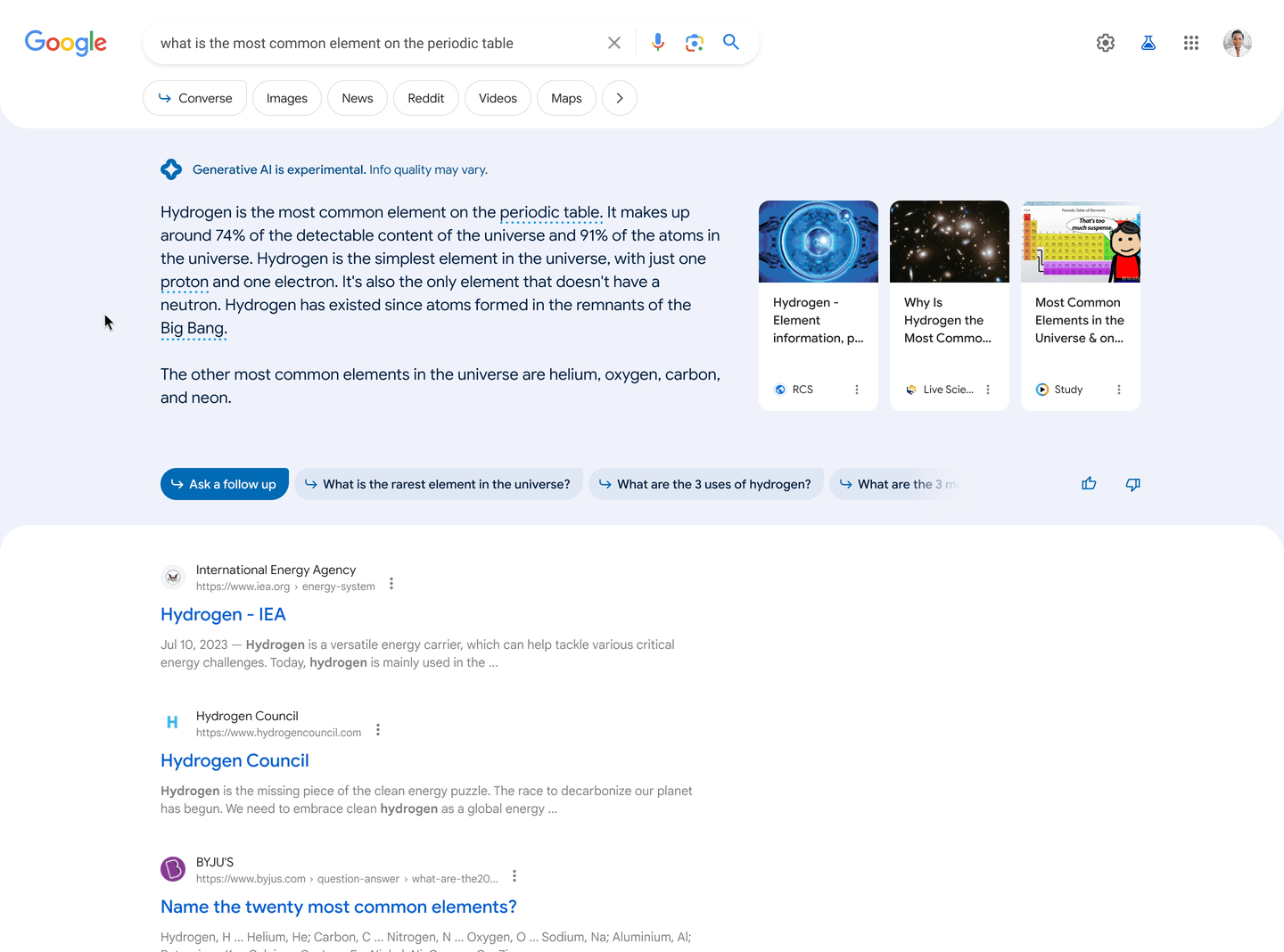
A dive into generative AI innovations with Google. (Source – Shutterstock)
Simplifying article reads and naming photos: How Google transforms with generative AI
|
Getting your Trinity Audio player ready... |
- Google’s AI summaries debut on iOS/Android, then Chrome desktop.
- Google’s AI auto-titles your photo collections.
Generative AI, without a doubt, continues to be a focal point in the tech realm – especially if it’s from Google. Do you recall when Google introduced the world to its AI-enabled Search experience, SGE, not so long ago? Since its inauguration, a surge of user feedback reached Google’s doors. In response, Google tirelessly improved the platform. Among these enhancements, users can now find an enriched selection of images and videos, plus a revamped link display.
The AI-driven SGE is on the verge of another breakthrough. As it stands, SGE can condense search results into concise summaries. But now, when you delve into an article from the search page, SGE is poised to provide a brief summary, a revelation made in a recent blog post by Google.
This new feature, dubbed “SGE while browsing,” may not become immediately available to the entire user base.
Tailoring user experience through generative AI with Google
Launching very soon, Google has earmarked it as a preliminary feature under the experimental phase in their Search Labs program. For those who are already familiar with SGE, this feature will seamlessly integrate into their experience. For the uninitiated, there’s a separate opt-in provision. This feature will initially grace the Google apps on Android and iOS platforms. Google also plans to introduce this to the Chrome browser on desktops in the imminent future.
For those with the privilege to access this on their mobile devices, Google promises a set of AI-curated “main takeaways” from articles, which will manifest upon tapping a designated icon. However, it’s worth noting that this function zeroes in on content that’s freely accessible, steering clear from those behind paywalls.
SGE’s capabilities are not limited to just these features. Google is also laboring to refine the user experience when they’re in the throes of research. Say you’re engrossed in a topic and stumble upon an unfamiliar term. Google’s next update aims to supercharge its AI-generated responses spanning many domains, from science and history to economics. Users will soon be able to hover over perplexing terms, unveiling definitions or relevant graphics. And if curiosity isn’t satiated, a simple tap promises a deeper dive.

Google leverages generative AI to simplify responses for various topics or questions. (Source – Google)
The world of coding isn’t left behind, either. Google recognizes the labyrinthine nature of code and is committed to making SGE’s summaries of coding content more intuitive. Coders, both budding and veterans, always thirst for knowledge. Google’s solution? Incorporating new capabilities into SGE to render the AI-generated code more comprehensible and easier to troubleshoot.
SGE’s repertoire includes AI-forged overviews tailored for various programming languages and tools. Whether troubleshooting or seeking suggested coding patterns for routine tasks, SGE has got it covered. With the impending updates, Google is set to integrate color-coding for code segments, paving the way for users to swiftly discern components like keywords or comments, facilitating a rapid understanding at a mere glance.
In May, Google unveiled SGE at its signature event, Google I/O. Since then, it’s been a whirlwind of refinements and upgrades. Opinions might be polarized, but Google stands confident. In a recent address, Sundar Pichai, the company’s CEO, mentioned the overwhelmingly positive user feedback and envisioned this AI-driven approach as the future blueprint of search.
Google’s Memories brought to life
However, the innovations don’t stop at SGE. Google is branching out with a new feature in its Photos app – the “Memories” tab. It’s tailored to house AI-curated collections of users’ cherished moments. Additionally, an inventive AI-driven titling feature is in the works to assist users in christening their photo compilations.
These automated collections, once adorning the apex of the Photos app, now have a dedicated space. Historically, these collections bore titles sourced from image geolocation data. But with the AI-powered titling, a sprinkle of creativity and vibrancy is added.

Google found new ways to play with images using generative AI. (Source – Google)
When users navigate a memory collection, a “help me title” option awaits. This feature, backed by AI, crafts titles rooted in the essence of the image. Yet, users retain control. They can feed a “hint,” steering the AI to better resonate with their vision.
This Memories feature is set to launch in the U.S, with a global expansion on the agenda. Google’s forward-thinking also envisions enabling video conversion of these memories, amplifying their shareability. Apple’s Photos, in comparison, already offers this.
In its finest moments, AI-spawned photo recollections, whether from Google, Apple, or Facebook, can evoke profound nostalgia. However, it’s not devoid of pitfalls, sometimes randomly selecting unrelated photos or dredging up memories that might sting.
READ MORE
- Safer Automation: How Sophic and Firmus Succeeded in Malaysia with MDEC’s Support
- Privilege granted, not gained: Intelligent authorization for enhanced infrastructure productivity
- Low-Code produces the Proof-of-Possibilities
- New Wearables Enable Staff to Work Faster and Safer
- Experts weigh in on Oracle’s departure from adland


